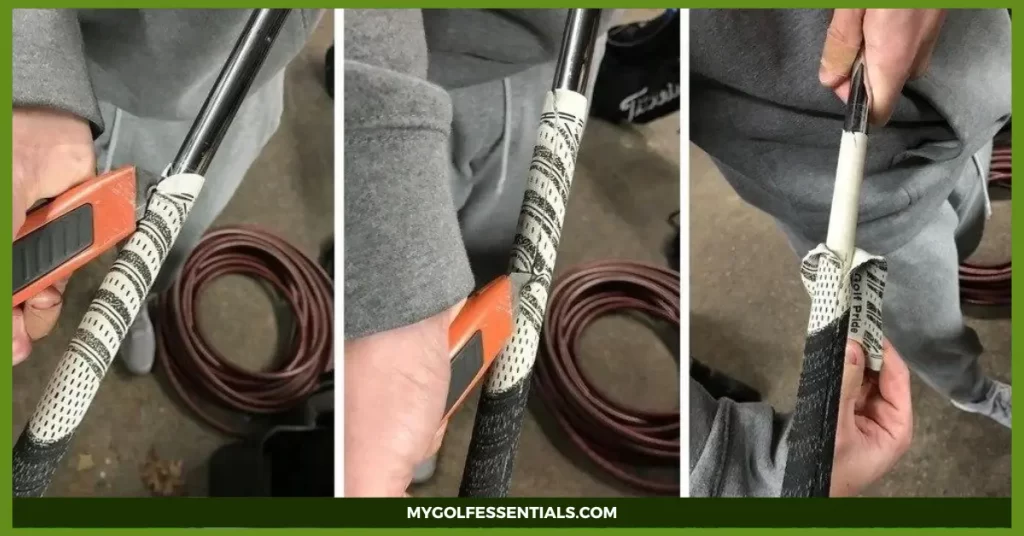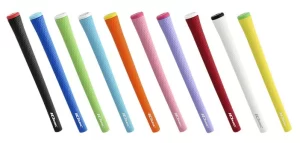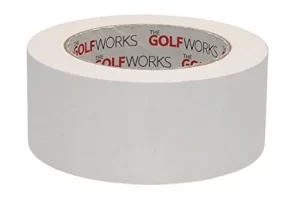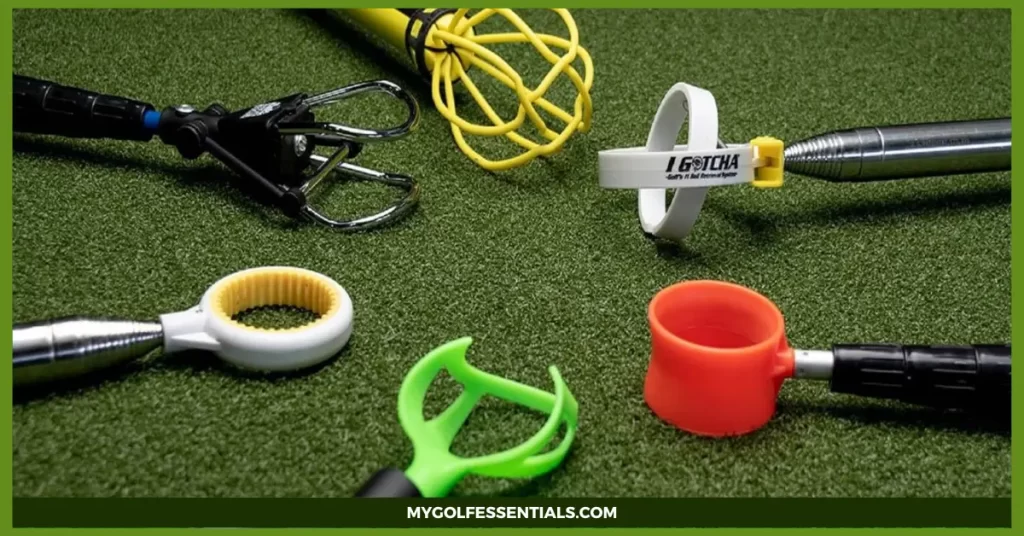
Are your golf clubs looking a little worse for wear? Have you noticed their grips are slick, slippery, or worn out? Replacing your golf club grips is an important step to restoring the performance of your clubs and ensuring maximum comfort every time you hit the green. Here, we’ll guide you through everything you need to know about regripping golf clubs so you can get back out there playing and winning!
An Overview of Regripping Golf Clubs
Regripping golf clubs is an important part of regular maintenance for any golfer looking to maintain or improve their game. Regripping involves replacing the grips on a club, which can wear down over time with use. Replacing these worn-down grips will help protect your hands and give you better control when swinging the club.
When regripping, golfers must pay attention to the type of grip they are using and any particular requirements for its installation. Various types of grips are available, and each has its characteristics. For example, some grips are meant to provide maximum feel, while others provide more control. Understanding these options’ differences is important when selecting the right grip for your clubs.
Grips also come in a variety of materials, sizes, and colors. The material will impact the grip’s feel, durability, and weather resistance. The grip size is important when selecting one for your clubs, as it can affect how you hold them while playing.
The Benefits of Regripping Your Golf Club

Regripping your golf clubs is a great way to improve the quality of your game. By replacing the grip on your clubs, you can enjoy more control and accuracy and reduce fatigue. A good grip also provides better shock absorption while hitting shots, reducing the chance of injury or discomfort due to vibrations experienced through a bad grip. Regripping can also help you adjust to a new club or make changes to an old one, allowing for improved performance in different situations.
When replacing a grip on your golf clubs, getting the correct size and material for optimal comfort and control is important. Most standard grips will fit most golfers; however, if you are looking for something more specific, there are plenty of options. Different materials and sizes offer different levels of traction and cushion, so be sure to select a grip suitable for your game.
The installation process is relatively easy if you have the right tools and follow the directions carefully. If done improperly, however, it can affect the performance of your clubs and make them less comfortable or even dangerous to use. If you feel uncomfortable completing the regripping process, you should take your clubs to a professional for installation.
Identifying When You Need to Regrip Your Club

Regarding golf club maintenance, regripping is one of the most important things you can do to keep your clubs in top condition. It’s important to know when you need to replace the grips on your clubs. This will help you keep up with regular maintenance and ensure that your clubs are always ready for a round of golf.
There are a few key signs that you should watch out for when determining if it’s time to regrip your clubs. The most obvious sign is wear and tear – if the grips on your clubs look frayed or worn, then it’s time for a replacement. It would be best to consider how often you play – if you play golf regularly.
If you’re having difficulty holding onto your clubs, you might need to regrip them. Grips tend to lose their tackiness over time, so if your hands have been slipping off of the club, then replacing the grip is a must.
Preparing for the Regripping Process

Before you begin the regripping process, consider a few things. First, you’ll want to ensure you have all the necessary equipment and supplies: golf club grip tape, solvent-based release agent, and a rubber or plastic vise clamp. Additionally, if your clubs have an old grip that is difficult to remove, you may need to use a grip removal tool.
Next, you’ll want to ensure the club is completely clean and dry before you begin regripping. Use a cloth or brush to remove dirt or debris from the club shaft. If any old pieces of grip tape are stuck, use an adhesive remover to carefully remove them.
Once you have gathered the necessary supplies and cleaned the club, it is time to begin regripping. Make sure that your grip replacement will fit properly on your club. Once you have confirmed the size, apply the grip tape to the club shaft and apply a solvent-based release agent. Once complete, position your new grip onto the club and tighten it with your vise clamp.
Types of golf club grip available
Golfers have various grip options when deciding how to regrip their clubs. The most common types are rubber, cord, and leather. Rubber grips provide a soft feel and added control for the golfer. Cord grips are ideal for wet weather conditions because of their enhanced texture, while leather is best known for providing superior comfort and feedback to the user.
Each type of grip will have a unique feel and performance, so choosing the one that works best for you is important. Additionally, hybrid grips combine multiple types of materials into one grip for enhanced performance.
No matter what type of grip you decide on, it is essential to ensure a proper installation is done to get the most out of it. Professional golf shops and instructors can help you determine the right grip for your game and ensure it is correctly installed. Regripping your clubs regularly enhances perform enhances performance and throughout your bag.
When selecting a grip, consider each type’s size, feel, and texture before making a final decision. Your choice of golf grip can have a major impact on your game, so take the time to find one that is comfortable and improves your performance.
Remove the old grips

First, you can use a grip removal tool like the Hook Blade. This long, thin knife-like device slides between the grip and club shaft, allowing you to easily cut the old grip off. Alternatively, you could use a razor blade or an X-Acto utility knife instead of this tool.
Another option is to use a grips grip solvent. This is typically a spray-on solvent that will soften the grip’s adhesive, making it easy to pull off with your hands. It’s important to note that if you choose this option, you must not get solvents on the club shaft.
Cutting It Off
When regripping golf clubs, the first step is removing the old grips from the shaft. Cutting them off with a sharp tool is the simplest way. Begin at the lower end of the grip and slice through about a third of its width. Make sure you take great care not to injure yourself or damage the shaft, particularly if it’s made of graphite. If you’ve done a good job with your slicing, you can easily peel off the grip from the golf club once there is a large cut through it.
Using A Solvent
Using a solvent is an important step in regripping golf clubs correctly. Before you start, ensure you have the necessary supplies, such as a rubber vise clamp, grip tape, and a solvent. It’s also important to wear protective gloves and eyewear when working with solvents.
First, loosen the old grip with a rubber vise clamp to begin regripping golf clubs. After that, you’ll need a solvent to remove the adhesive from the club shaft. A good solvent to use is an acetone-based product, which can be found in most hardware stores and online retailers.
Using Compressed Air
Regripping golf clubs is important for maintaining the performance of your equipment. You can use compressed air to help you with this task. Begin by removing any existing grip that’s on the shaft of the club. Place a rag over the top of the grip, then blast it with compressed air to detach it from the shaft. Aim away from yourself, as the grip may fly off suddenly. Once the grip has been removed, use compressed air to clean away any dirt or debris on the club shaft where you plan to install your new grip. This will help ensure a secure fit and will also help prevent damage to the new grip during installation.
Measure and apply the grip tape

Once you’ve chosen the grip tape for your golf club, it’s time to measure and apply it. The most important step is to get the measurements right; replace golf grips of different sizes depending on the type of club they will fit. Measuring both ends of the grip and writing down your findings so you don’t have to re-measure later is a good idea.
Once you have your measurements, you can start prepping the grip for the tape. Please ensure there is no dirt or debris on the grip by wiping it down with a cloth and some soapy water to ensure better adhesion of the grip tape. You may also want to lightly sand the area to make it smoother before applying the tape.
Measure the tape
Measuring the tape is an important part of regripping golf clubs. To accurately measure the amount of tape you need for your grip, start by measuring the circumference of the grip (the area where your hand will be when gripping the club).
Place a ruler or measuring tape under one end of the grip and wrap it around until it meets back with itself. Write down the measurement in inches and use this measurement to determine how much grip tape you will need.
Regripping golf clubs is a great way for golfers to improve their game by ensuring they have a comfortable and secure grip on the club during play. Measuring the tape correctly is an important first step when regripping your clubs.
Apply the tape
After selecting the right grip for your clubs, it’s time to apply the tape. Start by cleaning and lightly sanding the club shaft with fine-grit sandpaper. This will help ensure the new grip securely bonds to your golf club. Next, cut off a section of double-sided grip tape slightly longer than the circumference of the club shaft. Wrap the tape around the shaft and then add some electrical tape to hold it in place.
Golfers looking to regrip their clubs should take special care when applying the tape. You must use the right type of grip tape for your golf clubs, as this will help ensure that the regripping process produces solid and secure results. Double-sided grip tape is often recommended for this task, as its adhesive properties are strong enough to adhere firmly to the golf club shaft and the new grip itself.
Apply the new grips

The process of regripping golf clubs is an important part of maintaining the condition and performance of the club. The grip connects you to the club, and it needs to be in good condition for you to have proper control over your shots. Replacing or re-gripping your clubs periodically is necessary to ensure this is the case.
Using Solvent
Golf club regripping is important to keep your golf clubs in good condition. Using the correct solvent can make a big difference in how quickly and easily you can regrip your clubs. One of the main solvents used for this job is golf club grip solvent, which only takes two hours to dry. However, several other alternatives could be used in a pinch.
A golf tee is commonly used to plug the hole at the butt end of the grip before pouring in your solvent of choice. When using golf club grip solvent, pour a generous amount into the grip and shake it up to distribute the solvent evenly throughout. The excess solvent should then be poured through the vent hole onto the grip tape on the shaft, ensuring it is coated. To keep your floor clean, place a container underneath the taped shaft.
Now comes the time to slide the grip onto the shaft. Align the mouth of the grip with the butt end of the shaft and slide it on quickly (within a minute or two) while the tape is still slippery. You might need the help of compressed air to slide it on or wait a little longer for the solvent to dry if you are using paint thinner, mineral spirits, or soapy water as a solvent. If using soapy water, you must wait 24-48 hours for it to dry before regripping your golf club.
Using Compressed Air

Compressed air is one of the most popular methods for regripping golf clubs. This method does not require grip tape, making it simpler and faster than other methods. However, as with any task involving compressed air, caution must be exercised to avoid overinflation and explosion of the grip.
To apply the grip using this method, first fit the mouth of the grip just over the butt end of the shaft. Then, connect the nozzle of an air compressor to a needle attachment and insert it into the vent hole in the grip. With quick bursts from the compressor, send air into the grip while pushing it slowly down along the shaft. As air is injected, the grip will gradually slide over the shaft until it is fully applied.
Compressed air for regripping golf clubs is a great solution for those who want to save time and effort. However, it’s essential to take care when working with the compressor; too much pressure can damage the grip or cause an explosion.
FAQs
How often should I regrip my golf clubs?
Generally, the frequency of regripping depends on how much you use your clubs and the conditions you play in. If you are using your clubs regularly or playing in wet climates, it is recommended to regrip every 12-18 months. However, if you rarely use your clubs or mostly play in dry climates, you may not need to regrip for several years.
How do I know when it’s time to regrip my golf clubs?
Check your grips for signs of wear, such as excessive grip pressure, dirt or grime, cracking, and tears. If the grips are worn or slippery, that can be a sign that it’s time to regrip your clubs. Another indication is if you find yourself consistently adjusting your grip during swings. A good way to check if the grip size is still suitable for you is to try gripping a new club with the same size – if it feels too small or large, it’s a good indication that you should regrip your clubs.
Is there anything I should consider when choosing a new grip?
There are several factors to take into account when selecting a golf grip. Consider the type of material, such as rubber, synthetic, leather, or cord, and the grip size (or diameter) you want. It is also important to think about the design and texture – this can be a personal preference, but choosing one with a soft feel will help reduce fatigue during long rounds.
How much does it cost to regrip golf clubs?
The cost of regripping typically depends on the type of grip you choose. Synthetic and softer grips are the least expensive, while cord and leather options may be more costly. Additionally, some club fitters may charge a fee for installation services. Shopping around for the best deal before committing to regripping your clubs is best.
Conclusion
I hope this article has given you a useful overview of how to regrip your golf clubs. It’s an easy task, and with a little patience, you should be able to finish it quickly. Remember to use the right tools and materials to not damage your golf clubs while regripping them.



